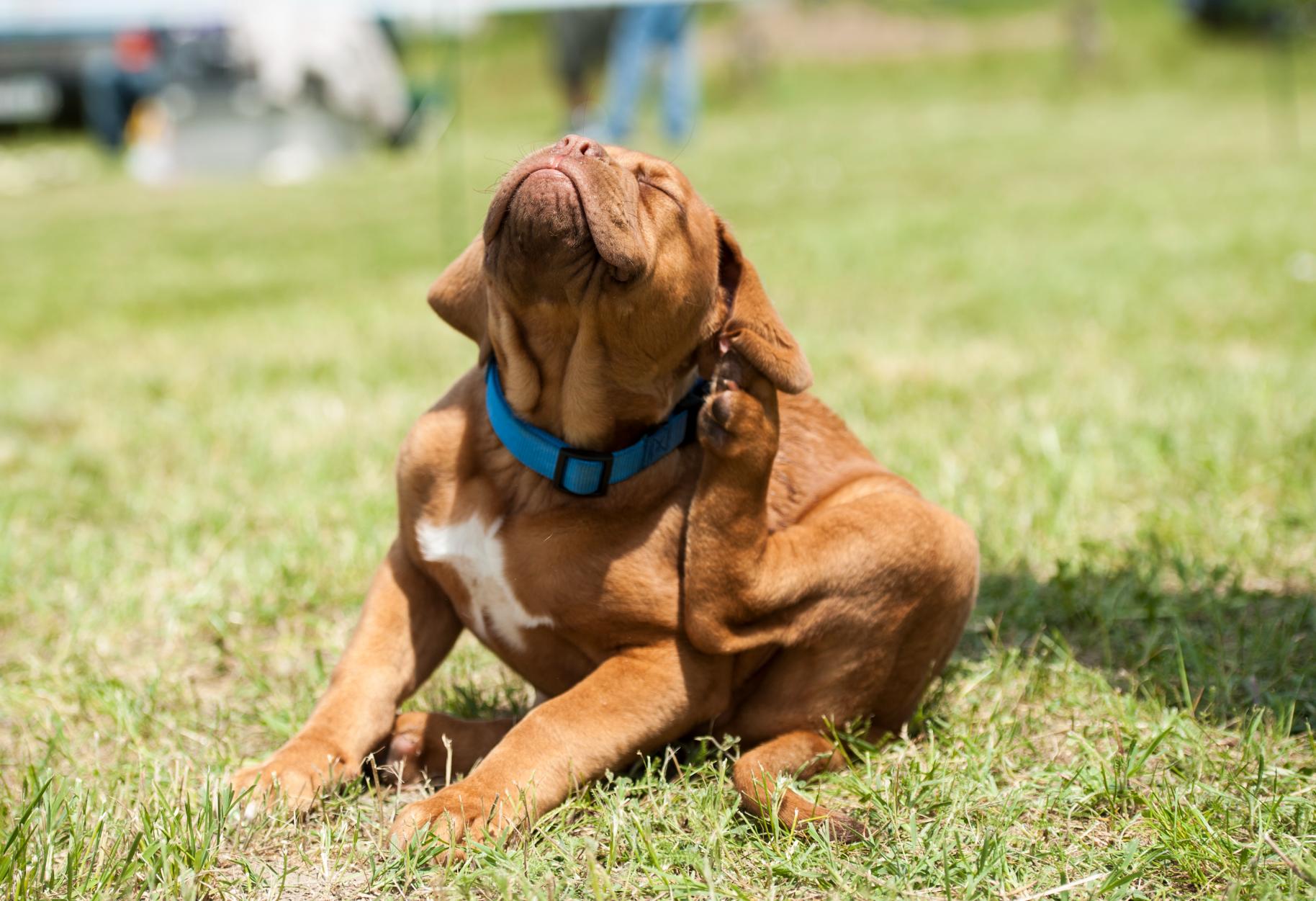What is Canine Seborrhea?

Canine skin disorders such as canine seborrhea can significantly impact a dog’s health and well-being, so it’s important to know the signs so you can seek relief fast for your precious pooch. In this blog, our team at Bayside Animal Hospital explores the causes, symptoms, and treatments for canine seborrhea.
Understanding Canine Seborrhea
Canine seborrhea is a skin disorder that results in the overproduction of sebum, a natural oil produced by the skin, leading to dog dandruff and an unpleasant odor. It can manifest as flaky, greasy, or dry skin affecting various parts of a dog’s body, including the back, face, ears, and underbelly.
What Causes Canine Seborrhea?
Primary seborrhea is often inherited, and can be seen in breeds like Cocker Spaniels, West Highland White Terriers, and Basset Hounds. Secondary seborrhea is more common, and usually results from an underlying condition or external factors. Common causes of secondary seborrhea include:
- Food allergies, environmental allergies, or contact dermatitis
- Conditions such as hypothyroidism or hyperadrenocorticism (Cushing’s disease)
- Bacterial, fungal, or yeast infections
- Poor diet or deficiencies in essential fatty acids, vitamins, or minerals
- Infestations of mites, fleas, or ticks
Know the Symptoms of Canine Seborrhea
Many canine skin disorders have similar symptoms, so a proper diagnosis is needed. Contact your veterinarian if you spot any of the following symptoms of canine skin disorders:
- Flaky skin or dog dandruff
- Greasy or oily skin
- Unpleasant odor that seems to be coming from your dog’s skin
- Red and inflamed skin
- Excessive itching and scratching
- Bald patches
- Thickened, wrinkled skin
- Chronic bacterial or yeast infections on your dog’s skin
Treating Canine Skin Disorders
Treating canine skin disorders involves addressing the underlying cause and managing the symptoms. Here are some steps that can help:
- Veterinary consultation: It is essential to consult a veterinarian to diagnose the cause of canine seborrhea. Skin tests, blood tests, or biopsies may be needed.
- Medicated shampoos: Using shampoos containing ingredients like sulfur, salicylic acid, benzoyl peroxide, or coal tar can help manage dog dandruff and canine seborrhea. These shampoos help reduce scaling, remove excess oil, and control infections.
- Topical treatments: Applying topical antiseptics, antifungals, or antibiotics can help treat localized infections and reduce inflammation.
- Dietary changes: Ensuring your dog receives a balanced diet with appropriate levels of essential fatty acids, vitamins, and minerals can improve skin health. Your veterinarian may recommend supplements to address specific deficiencies.
- Allergy management: Identifying and eliminating allergens from your dog’s environment or diet can help reduce seborrhea symptoms. Your veterinarian may suggest allergy testing or hypoallergenic diets.
- Medications: In some cases, systemic medications like antibiotics, antifungals, or steroids may be necessary to control infections or inflammation.
- Regular grooming: Regular brushing and bathing can help remove excess oil, dead skin, and debris, improving your dog’s overall skin condition.
Let Us Help
Please contact us if it’s time for a checkup or if you suspect canine skin disorders are making your furry friend uncomfortable. We’re here to help!


